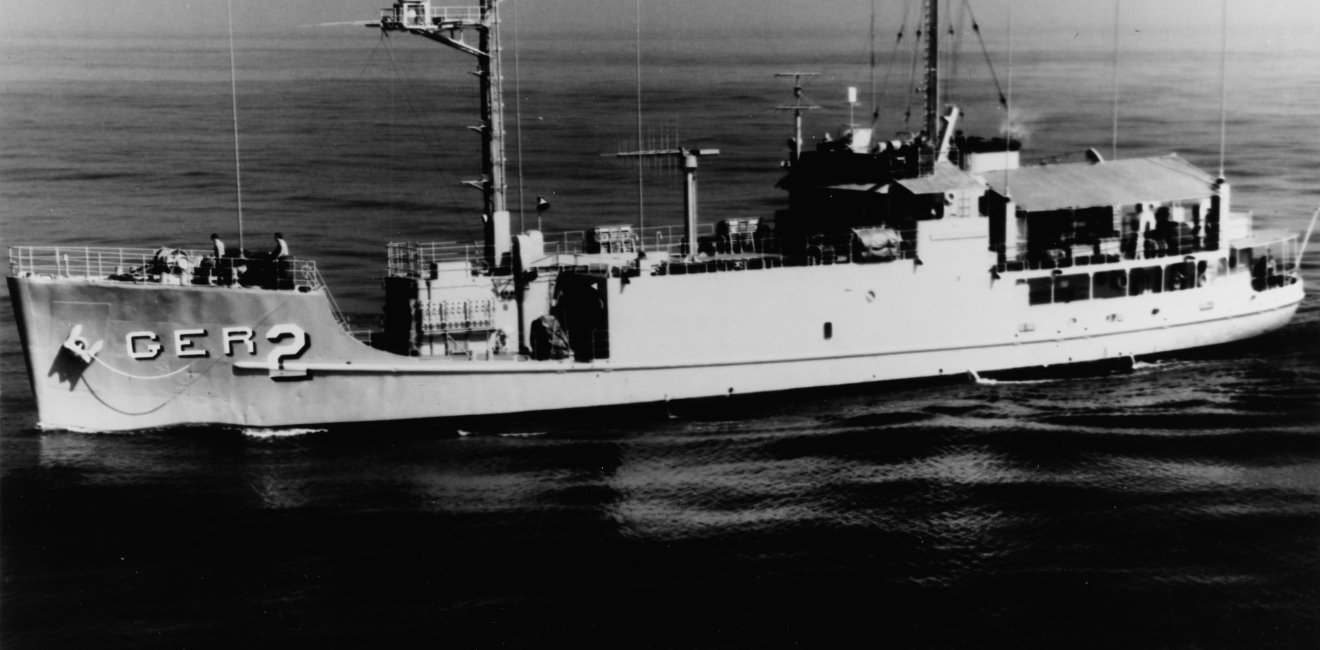On January 23, 1968, the North Koreans captured the US intelligence-gathering ship Pueblo, killing one crew member and taking 82 prisoner. Interrogated and tortured by their captors, the crew were held in North Korea for 11 months before being freed in December 1968.
The Pueblo incident sparked a major international crisis, bringing Northeast Asia to the brink of nuclear war. Fifty years on, questions linger as to why the North Koreans attempted something as provocative as attacking an American ship on the high seas, and why they ultimately agreed to a negotiated solution. Understanding the Pueblo incident may yet help us to make sense of Pyongyang’s persistent and seemingly inexplicable militancy.
Pueblo was a big surprise not just for the United States and its allies but even for North Korea’s allies China and the Soviet Union. It became clear in retrospect that the capture was a part of an increasingly violent trend that included, earlier that month, the Blue House raid – Pyongyang’s attempt to assassinate the South Korean President by infiltrating commandos across the 38th parallel.
The Pueblo incident may have been an effort to deflect attention from the failure of the raid. It may have also been an effort to “help” the North Vietnamese in advance of the Tet Offensive, a bid to dislodge the Americans from South Vietnam. Or – and this is most likely – it was simply a way of drumming up tension in Korea. War hysteria had always been President Kim Il Sung’s preferred method of justifying his draconian regime and solidifying his hold on power.
Did Kim Il Sung intend to go to war? The evidence is mixed. He did write a letter to the Soviet leadership on January 31, 1968, invoking the Soviet-North Korean Treaty of Alliance and requesting that, should the Americans attack North Korea, the Soviet Union would “provide us without delay with military and other aid and support, to mobilize all means available.” But if Kim hoped for unconditional Soviet support in a potential conflict with the US, he was in for a rude awakening when the Soviets flatly rejected his plea. “Indeed, we have a treaty,” Soviet leader Leonid Brezhnev responded. “Its essence is known both to you and to us. We would like to stress that it has a defensive character.”
In public, the Soviets defended their difficult ally, and Brezhnev even sent threatening letters to LBJ. But they were appalled in private. Brezhnev demanded that Kim Il Sung come to Moscow for consultations. Kim refused but did tone down his rhetoric and, on March 1, even promised the Soviet Ambassador that he was against unleashing “military hysteria.” The military fever in Pyongyang went down a notch. The North Koreans and the Americans began their difficult negotiations for the crew’s release in the border village of Panmunjom.
These talks dragged on and on. The Americans were asked to sign a document, acknowledging espionage, begging forgiveness, and promising that such thing would never happen again. Only then would the North Koreans release the crew. Describing the state of the talks to the Soviet Ambassador in Pyongyang, North Korea’s Foreign Minister Pak Seong-cheol voiced his confidence that the Americans would sign the humiliating document in the end. “They have no other choice. If they don’t sign the document, they won’t get Pueblo’s crew. If they start a war, their crew members will be gone. They’ll get back their corpses.” He added: “They are threatening us, and we are threatening them: let’s fight!” The Ambassador questioned such hard-line attitude, citing Moscow’s experience. One has to make concessions sometimes, he said. But Pak insisted that “each country does what is in its interest.”
This hard-nosed realism paid off in the end. The Americans agreed to sign on the understanding that they would refute their own signature after the crew were released. The North Koreans did not mind. All they wanted was to humiliate America. “Receiving a document with apologies from the American government,” noted one North Korean diplomat shortly before the deal was sealed, “would mean the complete destruction of the myth about America’s boundless might. This will become another new victory of the Korean people against American imperialism.” All that mattered, from Kim Il Sung’s perspective, was the domestic audience, where Washington’s defeat – backed by a piece of paper signed by General Gilbert Woodward but immediately disclaimed – served as a reminder of Kim’s foresight and prowess.
In the following months, in spite of being told by the Soviets that they would definitely not fight a nuclear war with the U.S. on his behalf, Kim Il Sung persisted with his exercise of carefully calibrated militancy. On April 15, 1969 the North Koreans downed an American reconnaissance plane EC-121, killing all 31 on board. The Soviets again pressed their trigger-happy allies to keep their cool. In response, the North Koreans claimed that, as Defense Minister Choe Hyon put it, the Americans “had become bogged down in the Vietnam War, and they are not ready for a war with the DPRK [North Korea].” But if they did go to war, “we would fight them to the last man.”
The North Koreans have proven themselves to be unsurpassed masters of deterrence. Their ability to balance on the brink without falling over has hinged on the perception that the regime is irrational, that, when push comes to shove, Pyongyang would rather fight than capitulate. Internal documentation suggests that Kim was not bluffing. From early on he convinced himself that only by appearing ready for a suicidal war would he be able to avoid one.
Beating war drums helped Kim keep himself in power for longer than anyone could have imagined in 1945 when, as a Soviet puppet, he was first installed as the ruler of North Korea. Kim’s grandson, Kim Jong Un, draws on this legacy of death-defying militancy for the same set of reasons: self-aggrandizement and humiliating America. Like his grandfather in 1968, the younger Kim is still willing to “fight to the last man” and, through this willingness, make sure that he will never have to.








